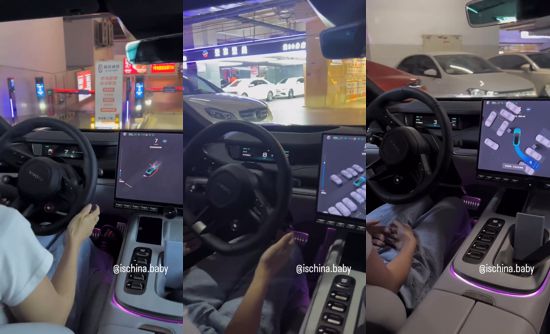ALRINCON.COM TELEGRAM Porn Discounts Sex Games Porn Games Juegos XXX Hentai Games PornStar Games
3D Porn Live Sex Free Live Sex Free Sex Games Páginas Porno Rose Toy Celebrity Fappening Celebrity Sex Videos TikTok Porn
3D Porn Live Sex Free Live Sex Free Sex Games Páginas Porno Rose Toy Celebrity Fappening Celebrity Sex Videos TikTok Porn
Published on 2024/01/19
MOTORPORN VOL53
david
I'm telling you, don't wait until retirement to buy yourself a Lambo.

If your passion is cars and you want a good one before getting old, remember: Capitalism, savings, and hard work.

|
➡️ JOIN OUR TELEGRAM CHANNEL |

ExtraBall
The best technique for a good dribble.
ExtraBall2
(Clicking on these links daily you support ALRNCN's work. They're collaborators or sponsors and, by visiting their sites, they like us even more)







THE CINEMA OF THE FUTURE
Imagine a near future where the visual quality of movies and video games becomes so stunning that it becomes a true challenge to distinguish reality from fiction. We’re looking at productions where AI-created hyperrealism will move live actors aside, turning digitally generated characters into the real stars of entertainment. Within the next decade, these “virtual actors” won’t just feature across various genres; they’ll capture audience admiration, much like today’s biggest Hollywood icons.
With this shift, awards like the Oscar for Best Actor or Actress might fade into history, replaced by categories honoring the best digital performances. Instead of following stars like Brad Pitt or Meryl Streep, future generations could be eagerly awaiting the next roles of AI-created characters who, with their versatility, can jump seamlessly between comedies, dramas, and action films, establishing a new standard in the connection between audiences and their favorite “stars.”

# Watch video
ExtraBall
Scares!
ExtraBall2
(Clicking on these links daily you support ALRNCN's work. They're collaborators or sponsors and, by visiting their sites, they like us colemann more)






THIS IS WHAT GAME OF THRONES WOULD LOOK LIKE IN A TRAILER PARK, ACCORDING TO AI
Ever wondered what Game of Thrones would look like if it took place in a trailer park in the American South? The creative team at "Demonflyingfox" used artificial intelligence to give the series a Southern twist, complete with every cliché you can think of. The main characters are transformed into stereotypical Florida trailer park residents, surrounded by swamps and alligators instead of dragons. The whole thing has that classic redneck vibe, with gators, cold beer in hand, and a touch of chaos.

# Watch Video
ExtraBall
Grabbing some snacks for a lazy day of binge-watching at home.
ExtraBall2
(Clicking on these links daily you support ALRNCN's work. They're collaborators or sponsors and, by visiting their sites, they like us olehn more)



























RECOMMENDED SITES
 Add your site
Add your site
- Motherless
- XRares
- Candid Teens
- Erotic Beauties
- celeb-stalker.com
- BoobieBlog
- drunkenstepfather
- Videos De Maduras X
- Kanoni Net
 Add your site
Add your sitePorn Discount
💩 CrazyShit
🤪 eFukt
NudeChatGirls
Top XXX Pictures
Bingo Porno
Best Porn Blog Sites
Sex Games
Real Amateur Porn
MrPornGeek
CamBB.xxx
ChatSex.xxx
Comepollas
PornScn Free Porno
Stripchat
EhoCams.com
AI Girlfriend App

















HOW DID I END UP HERE
Sometimes life puts us in situations that make us question our choices. We’ve all been there. Moments when doubt creeps in, and you wonder if you took the wrong path, if you missed an opportunity that could have led you somewhere else, to another scenario.
It’s easy to get caught up in that sense of frustration, that constant comparison that makes you think maybe you chose the wrong job, the wrong profession, or the wrong direction. We imagine how life could have been "on the other side," thinking things might be different if we had made other decisions.

# Watch videos
ExtraBall
I don’t think that’s how it’s done.
ExtraBall2
(Clicking on these links daily you support ALRNCN's work. They're collaborators or sponsors and, by visiting their sites, they like us kistnern more)











THE NEW DEVICE THAT TAKES FLIGHT TO THE NEXT LEVEL
Austrian wingsuit pilot Peter Salzmann has set three new world records in a single, exceptionally long flight. Equipped with an innovative wingsuit featuring foil technology, Salzmann achieved a flight time of 5 minutes and 56 seconds, covering a distance of 12.5 kilometers and descending 3,402 meters from Jungfrau mountain in Switzerland.
This breakthrough in wingsuit design, developed in collaboration with Red Bull Advanced Technologies, includes a 2.1-meter wing that significantly enhances gliding efficiency, allowing for longer and faster flights.
With this achievement, Salzmann has not only pushed the boundaries of human flight but also opened up new possibilities for the future of aerial sports.

# Watch Video
ExtraBall
Dumb and Dumber (1994)
ExtraBall2
(Clicking on these links daily you support ALRNCN's work. They're collaborators or sponsors and, by visiting their sites, they like us ashxschultzn more)











Contact
You can tell us whatever you want via email: [email protected]
If you prefer, you can use this contact form:
If you prefer, you can use this contact form:






GETTING READY FOR HALLOWEEN
The fear of clowns, or coulrophobia, has its roots in a mix of psychological, cultural, and social factors. On one hand, the exaggerated appearance of clowns, with their bright makeup and forced expressions, creates distrust because it makes it hard to interpret their true emotions. This can trigger a sense of threat due to a fear of the unknown. Additionally, the phenomenon known as the "uncanny valley" leads to discomfort with figures that look almost human but have a distorted or artificial touch, like clowns.
A clown’s chaotic and unpredictable behavior adds another layer of unease, as it breaks social norms and creates uncertainty. Cultural influences have also played a major role in shaping the negative perception of clowns, with characters in books and movies depicting them as terrifying figures, further solidifying their sinister image. Real-life cases, like the serial killer John Wayne Gacy, have added to this fear by associating clowns with danger.
In summary, the fear of clowns stems from a distrust of what hides behind a mask and cultural influences that make these characters a source of anxiety for many people.

# Watch videos
ExtraBall
Earning my seat in hell.

ExtraBall2
(Clicking on these links daily you support ALRNCN's work. They're collaborators or sponsors and, by visiting their sites, they like us ericdn more)











XIAOMI SU7: AUTONOMOUS TECHNOLOGY IN ACTION
The Xiaomi SU7 stands out not only for its design and power but also for its advanced autonomous capabilities. With systems like Xiaomi Pilot Pro and Pilot Max, this car can handle complex maneuvers, such as lane changes, adapting to curves, and avoiding obstacles. But the most impressive feature is its autonomous parking function: it navigates through underground parking lots, finds an empty spot, and parks with precision, like having a valet in your pocket.
The "Xiaomi Pilot" system comes in two versions. Xiaomi Pilot Pro, available on the base model of the SU7, uses an NVIDIA DRIVE Orin chip with 84 TOPS* of power, along with 11 cameras, 12 ultrasonic radars, and a front millimeter-wave radar. This technology enables features like automatic lane changing, speed control, and congestion prevention.
For the more advanced versions, Xiaomi Pilot Max takes things to the next level. This system adds a LiDAR sensor, two rear millimeter-wave radars, and a pair of NVIDIA DRIVE Orin processors, delivering a total of 508 TOPS* of processing power. It enables complex maneuvers, such as multi-level obstacle avoidance and autonomous parking in urban settings.
Here’s a video where you can see it navigate a parking lot and park itself, taking smart parking to a whole new level.

# Ver vídeos
*TOPS stands for Tera Operations Per Second, which means "trillions of operations per second." It’s a measure of a chip or system’s processing power, especially relevant for AI and machine learning tasks. In the case of the Xiaomi SU7, it refers to the ability of the NVIDIA DRIVE Orin processors to handle massive amounts of data and perform complex operations swiftly, essential for autonomous driving and real-time decision-making.
ExtraBall
The slow-motion of the day.
ExtraBall2
(Clicking on these links daily you support ALRNCN's work. They're collaborators or sponsors and, by visiting their sites, they like us pebblen more)






























